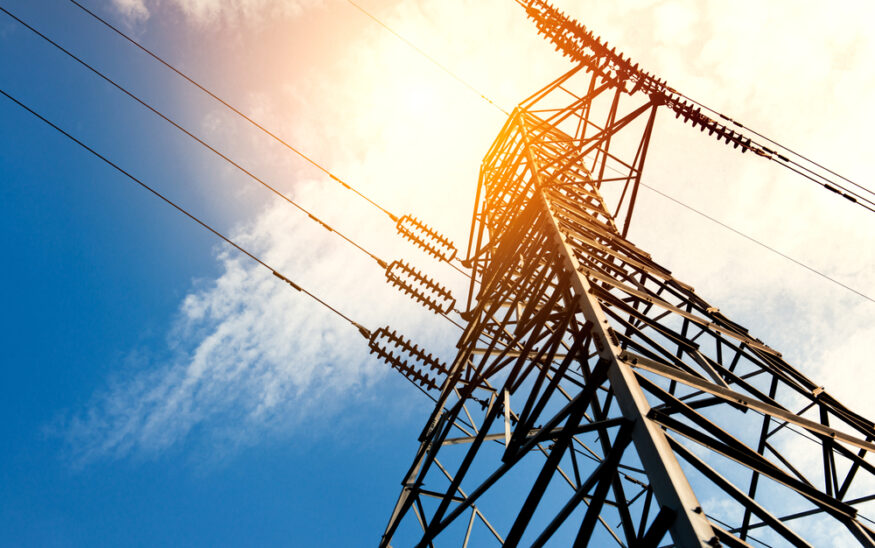The Future of the Power Grid and Climate Change
Energy storage is the key to sustaining power in an emergency
Caleb Scalf //March 29, 2019//


The Future of the Power Grid and Climate Change
Energy storage is the key to sustaining power in an emergency
Caleb Scalf //March 29, 2019//

2018 was an expensive year for extreme weather events. California’s Camp Fire was the deadliest and most destructive fire in state history, with more than 150,000 acres incinerated; 18,000 structures destroyed and widespread loss of life among both humans and animals. Coupled with nearly 18,000 wildfires around the state in 2017 and 2018 combined, the tragic consequences of these fires and natural disasters will be felt for years to come. When then-Governor Jerry Brown said that the wildfires were “… evidence of our changing climate in real time,” it was an extraordinary statement.
Since the summer of 2014, investigators have blamed more than 1,500 fires on PG&E power lines and hardware and the company’s equipment is suspected to have caused the Camp Fire. Because California law requires utilities to pay damages for wildfires if their equipment caused the blaze even if the utilities were not found negligent, the question around PG&E filing for bankruptcy soon became a case of when, not if. When the utility company officially filed for Chapter 11 bankruptcy protection, the prospect of facing more than $30 billion in liability made clear the implications of building resilience into business operations.
This isn’t a litigation of how PG&E conducted itself, mostly because it’s too early to say what will happen. Instead, let’s look at some lessons that can be drawn from the toxic mixture of climate change and faulty equipment and infrastructure. More specifically, we’re interested in thinking about how our reliance on the grid — any grid — can jeopardize business continuity and emergency preparedness during extreme weather events.
We can’t get around the effects of climate change and its impact is only growing more extreme over time. Consequently, PG&E, other utility companies and the business community in general needs to be prepared to address business continuity and emergency preparedness in the event that one of these extreme weather occurrences happens.
How many operations can you think of that require unimpeded power? For the majority of modern businesses, connectivity is crucial, and they require uninterrupted power from the country’s energy grid. When looking at the country's aging energy infrastructure, there’s no wonder that it’s failing in certain places.
The equipment has a 50-year life span, but because much of it was installed in the 1950s, it’s already approaching 70 years in operation. Additionally, a 2015 review of U.S. infrastructure found climate change to be "by far" the biggest threat to it. Compounding the issue, our country’s growing population places increasing demand on the grid as new developments that require electricity are being built and more electronic devices are making their way into homes and offices. While generation is flat, the demand for energy is increasing, and as a result, increased pressure is placed on utilities and the power grid.
Interruptions in electricity service vary by frequency and duration across the many electric distribution systems that serve about 145 million customers in the United States. In 2016, the average U.S. electricity customer was without power for 250 minutes and experienced 1.3 outages.
Procedures and Processes
What procedures and processes are in place to ensure the minimum level of service to utility customers? Across the United States, the power sector is struggling with its vulnerabilities to climate change. Utilities around the country are fortifying their infrastructure against hurricanes, wildfires and other extreme weather events exacerbated by climate change. But because projects such as moving power lines underground to prevent wildfires are extremely costly, price hikes could be passed along to residential and commercial customers as utilities and other major infrastructure players attempt to deal with climate change. As PG&E’s bankruptcy illustrates, we need to cut down the costs of climate change and we’re going to have to find a different way to structure the system, otherwise no utility will be able to survive.
Renewable Energy + Energy Storage = Better Emergency Preparedness
While some customers have backup generators that provide auxiliary power, most customers are without electricity when outages occur. Many current energy solutions are too expensive for the majority of homes and businesses — whether discussing energy storage or renewable generation.
Fortunately, as technology progresses, renewable energy and distributed energy storage are becoming increasingly vital aspects of how forward-thinking utilities design, manage and maintain their distribution grids.
In fact, the United Nations’ Intergovernmental Panel on Climate Change’s (IPCC) special report Global Warming of 1.5 ºC, noted that distributed energy storage has the potential “to significantly alter the grid as we know it.” Additionally, renewable energy is accounting for an increasing percentage of domestically-produced electricity. Optimal climate emergency preparedness will ultimately involve coupling renewable generation for cost savings with backup energy solutions in the event that some equipment fails on the other side of the grid.
With each extreme weather event, the socio-economic impacts of climate change continue to grow and it’s too expensive for most companies to become completely grid independent, but there’s a case that exhibits how working with grid operators and owning a decentralized storage solution can save money and deliver an extra level of emergency preparedness. There’s no magic bullet solution to solve all the climate-related energy problems, so we have to work together. Disaster preparedness will not mitigate the impact of climate change, but it can drastically reduce the impacts upon people, business and the community.
About the authors: Caleb Scalf is the founder and CEO of Hygge Power, a Boulder, Colorado-based energy startup working on the future of energy generation, distribution and storage.Chris Chen is an independent consultant. He recently retired from SDG&E as their Strategy Development Manager, focusing on business model innovation and advanced technology. He has two Smart Grid-related patents and is a frequent speaker at industry events.



























